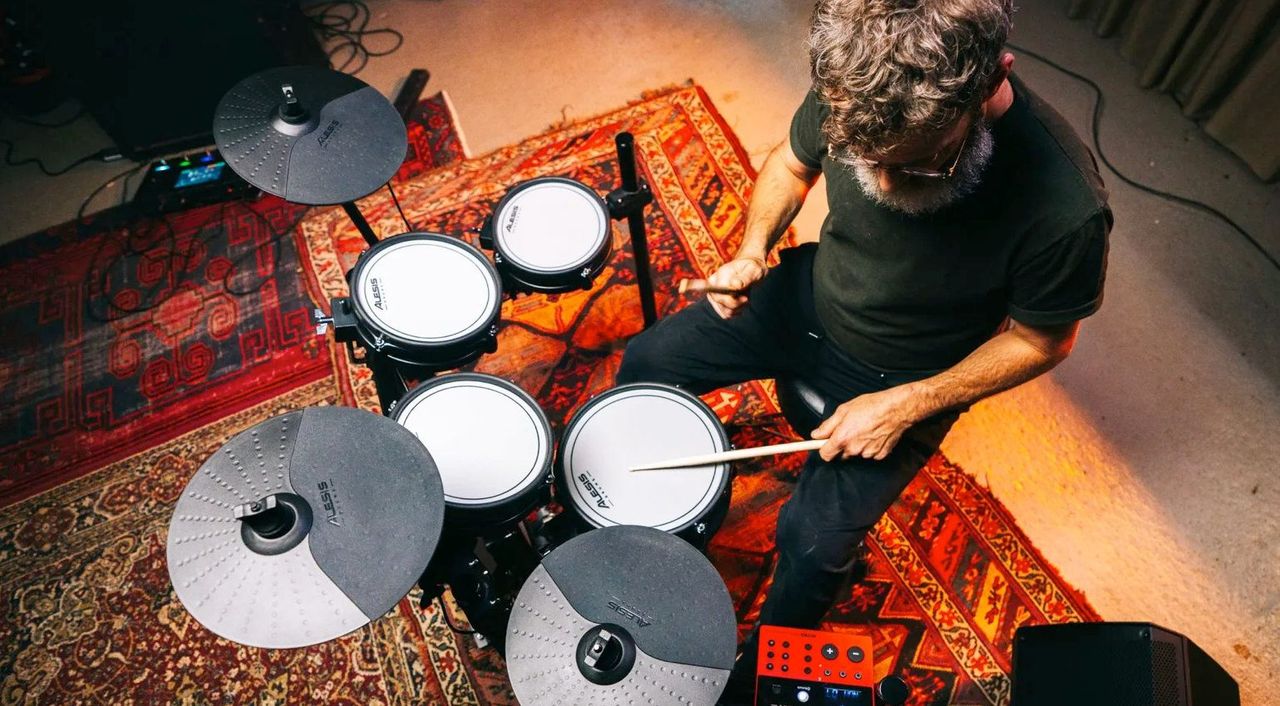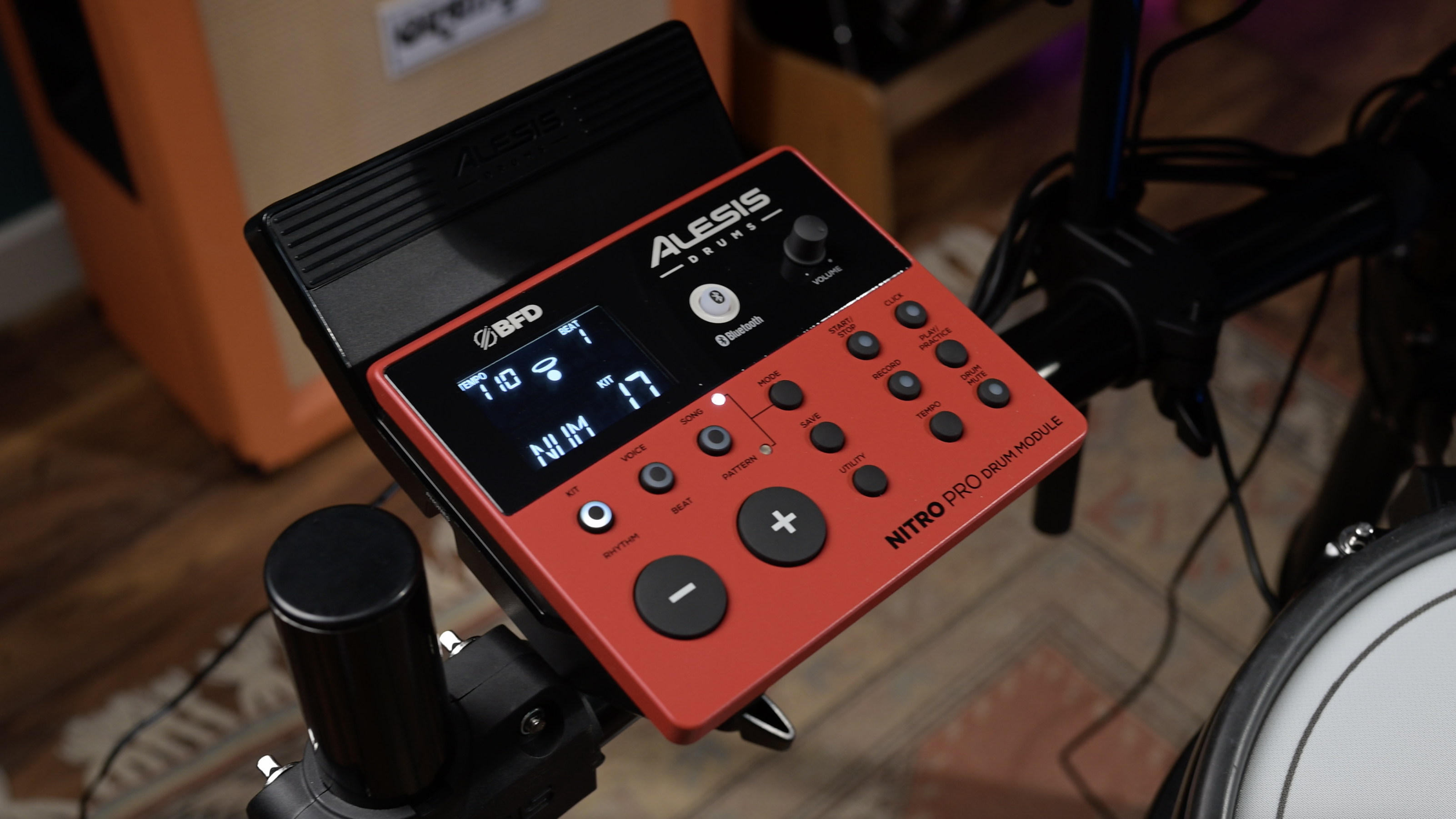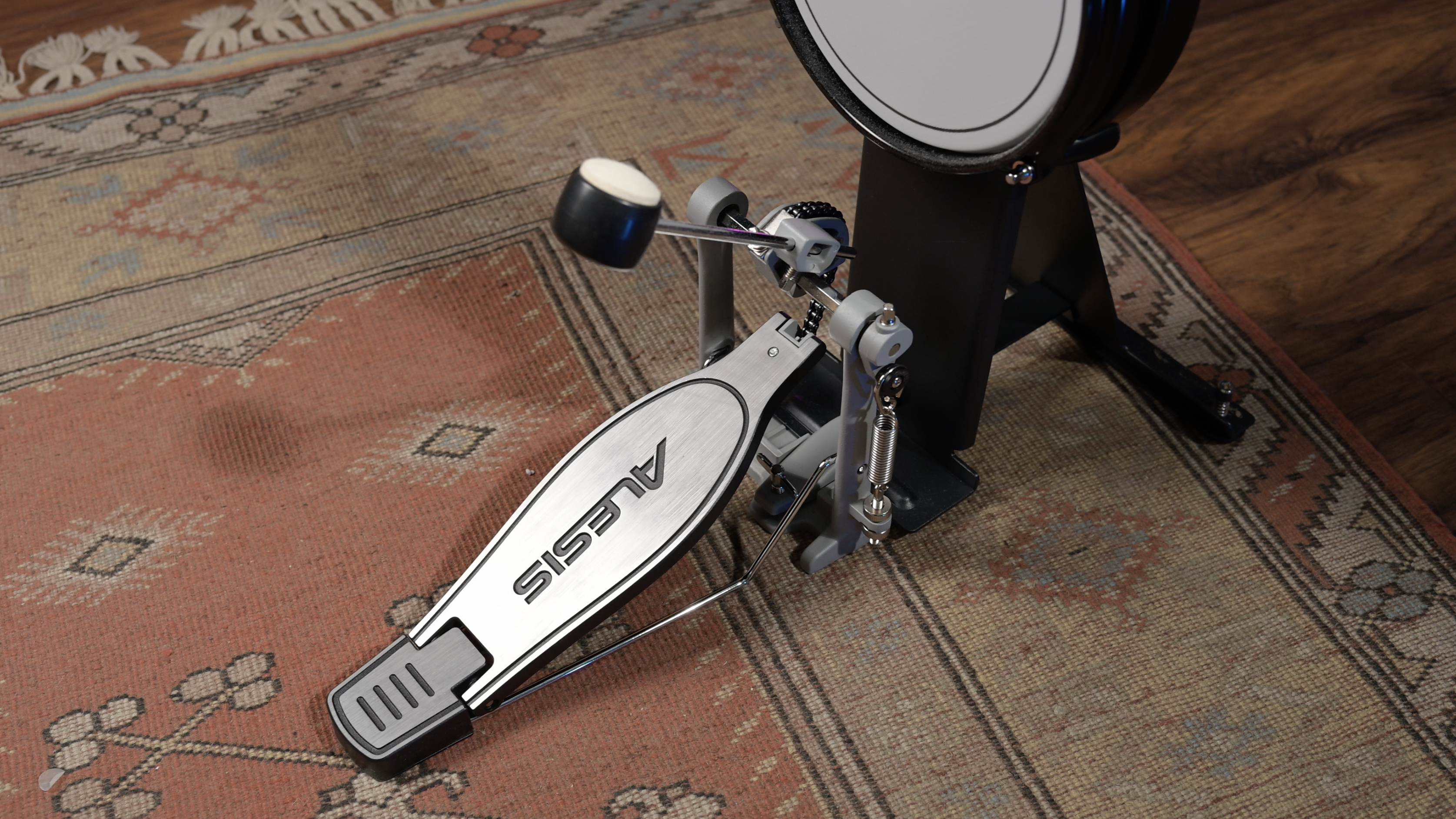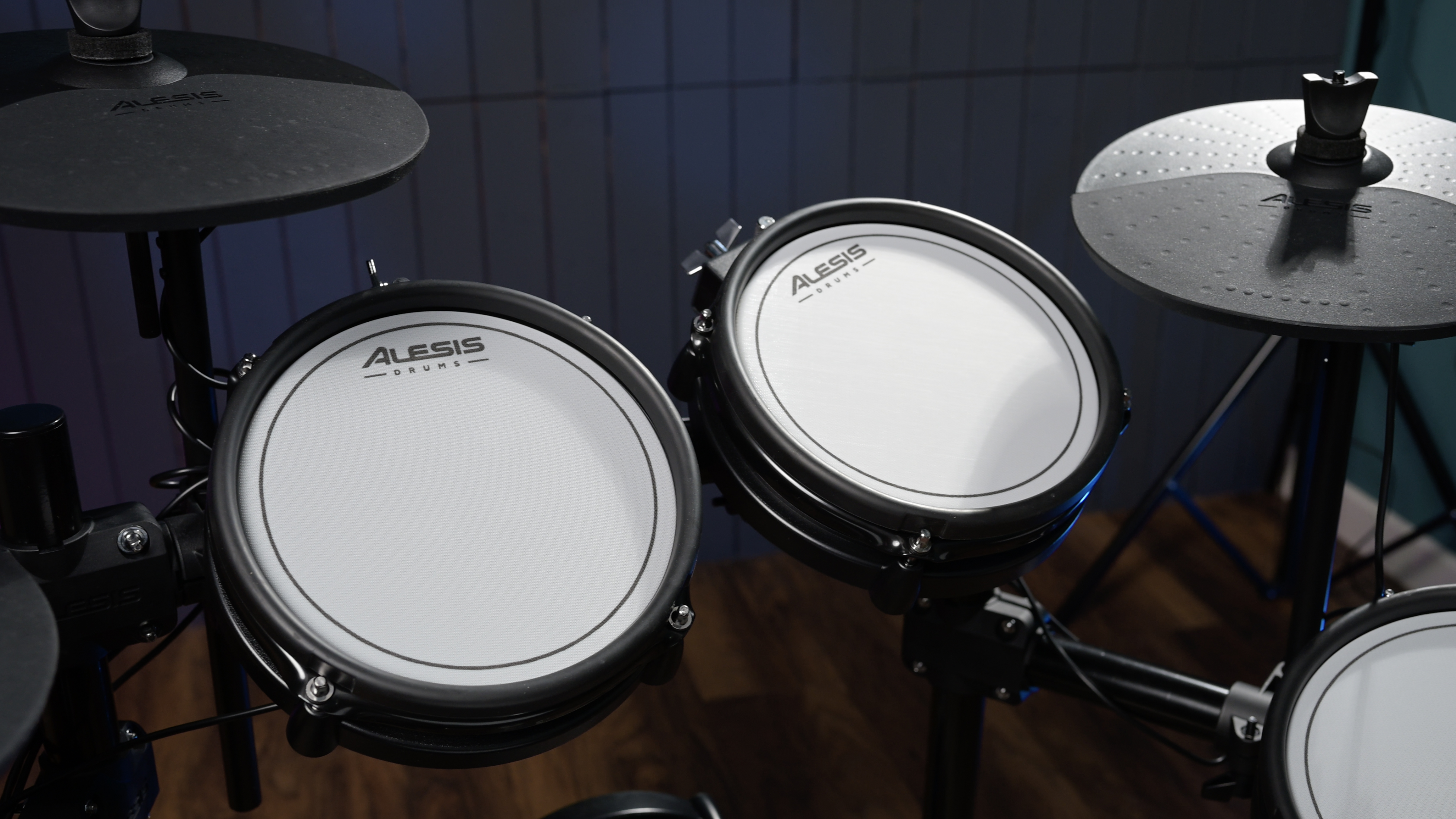
Alesis Nitro Pro: What is it?
Alesis has been on something of a tear of late, having surprised the world with not one, but three electronic kits featuring multi-sampled libraries delivered direct from the module with the BFD-equipped Strata Prime, Strata Core and, most recently the Strata Club kits. But, it’s not only been focussed on the higher-end offerings in its catalogue - prior to the release of those kits, it overhauled its affordable offering with the Nitro Max.
This setup brought us all-new sounds, ported (albeit not in the same multi-sampled/multi-mic’d resolution as the Strata series) from, you guessed it, BFD. I was impressed with the Nitro Max when I reviewed it; it serves up a five-drum/two-cymbal plus hi-hat configuration, mesh-headed tom and snare pads and Bluetooth connectivity, while relieving you of just under $400/£400.
Max, is of course, short for maximum. So, I was 110 percent impressed when Alesis revealed that they’d gone one-better with the Nitro Pro - a kit in the same configuration, but with some tweaks to the pads and some additional improvements all round. It’ll set you back $300/£200 more than the Max, too.
Except, on paper, you could be forgiven for wondering exactly what has changed - the Nitro Pro is also a five-piece-plus-cymbals setup, and the pad sizes are the same diameter as the Nitro Max. So what actually are the differences between the Nitro Max and Pro?
Watch my Nitro Pro demo below
First up, the Max’s bass drum pad - good as it is - has been swapped out for a mesh-headed, eight-inch tower that will easily accept a double bass drum pedal. Next, Alesis has unlocked a second zone across the tom pads; and the snare pad - while still featuring the same 10-inch diameter as the Max - gets a boost in depth. Finally (for the kit’s hardware) the aluminium rack of the Max has been upgraded to steel for greater stability.
You might have already spotted that the Nitro Pro module is red. But, as well as the colour change, Alesis has equipped this version with additional sounds in its core library, plus there are four extra preset kit slots. This leaves potential buyers with a conundrum: go Max or go Pro?
Alesis Nitro Pro: Sounds & performance




The first thing to note here is that, on paper, the differences between the Nitro Max and Nitro Pro may seem subtle. But many of the Pro’s advantages come down less towards sound, and more on the side of enhanced playability.
When it comes to a bass drum pad, a mesh drum head feels different to a rubber pad, and while you’ll be hitting it with a beater attached to a pedal rather than a stick that you’re gripping in your hand, it is certainly a noticeable change. First up, there’s the noise consideration. A mesh pad is friendlier when it comes to vibrations, and while the Nitro Pro’s 8-inch mesh bass drum pad still generates some noise (especially if you’re playing this kit in an upstairs room), it is lower than that of the rubber pad found on the Max. I found it to be more stable, too, with less side-to-side movement under harder strikes.
But, the big advantage here is that it’s tensionable. This means you can tailor the head’s tension to help create a comfortable and responsive rebound, and while this will likely be a set-and-forget feature, it does offer additional flexibility.
Similarly, the increased depth of the snare adds a little more realism when it comes to positioning. This is less about being able to get the snare in the right place, which can be done with any depth of pad, but by having an increased depth, it affects the positioning of other kit parts, hardware, and your legs.
The included soundset is impressive for an affordable kit
With the kit set up, everything feels a little more spaced out - not a huge increase as with the Strata Prime, but enough to make everything less bunched-up and a bit more akin to the placement of drums in an acoustic set. It’s here that the steel rack displays a bit more stability, too.
One of the biggest improvements is the addition of the dual-zone toms. This means that you can apply a different sound to the rim zone of each tom pad as well as the head, effectively doubling the number of sounds you can get from your tom pads. When using the module, this can be anything from a more realistic acoustic tom articulation, or if you’re less concerned with replicating fully acoustic playability, it can be used to populate your preset with additional percussion, electronic sounds, or any of the other voices found in the sound set.
The Nitro Pro also has a MIDI interface built in, which functions via a USB connection. The tom head and rim zones produce separate MIDI notes, so, if you are considering using this kit as a controller for BFD, EZ Drummer, GGD or any other drum software libraries, you’ll be able to map them to their counterparts or additional sounds.
Elsewhere, the playability and feel of the kit is very similar to that of the Nitro Max. The included soundset is impressive for an affordable kit, and while it doesn’t offer the same dynamic resolution as Alesis’ Strata kits, it certainly holds its own within the context of its competitors thanks to the BFD-derived samples found within.
Alesis Nitro Pro: Verdict
The Nitro Pro should be thought of as an alternative to the Nitro Max from the outset. With so many similarities in terms of the module features (stereo outputs, a USB MIDI interface, Bluetooth, aux in), there’s little in the way of sound upgrades to really consider it a huge step up.
The enhanced hardware designs make it a ‘might as well’ type of buying decision if you don’t already own a kit - although it would have been a solid jump had Alesis offered the Nitro Pro with an acoustic stand-mounted hi-hat rather than a pad/foot controller arrangement.
In isolation, it’s every bit as impressive as the Nitro Max, and I love the fact that Alesis makes adding extra pads and cymbals simple - they’re easily found on the Alesis website, come with all relevant hardware, and the expansion sockets are clearly labelled on the back of the module.
If you currently own an Alesis Nitro Max and are thinking of upgrading, it’s more likely that you’ll skip the increment and head straight to the Strata series. However, if you’re upgrading from an older kit or buying your first electronic drum set, the Nitro Pro offers all of the things I enjoyed while testing the Max, but it just goes that extra distance thanks to the upscaled hardware and pad zones. It might fly under the shadow of Alesis’ bigger-ticket releases, but the Nitro Pro represents a solid, long-lasting purchase for those on a budget.
Also try
Hands-on demos
Guitar Center
Sweetwater
Alejandro Sifuentes
Alesis Nitro Pro: Specification
- Module: Alesis Nitro Pro
- Pads: Alesis Pro 10” snare, 8” toms (dual-zone), 8” bass drum pad (mesh)
- Cymbals: Alesis Pro 10” x3 (chokeable crash and ride)
- Hardware: Steel rack, 3x cymbal holders, hi-hat controller
- Features: 36 preset kits/16 user kits, 529 sounds, Bluetooth, aux-in, headphones, stereo output, additional trigger input (tom and crash), MIDI (USB)
- Contact: Alesis







